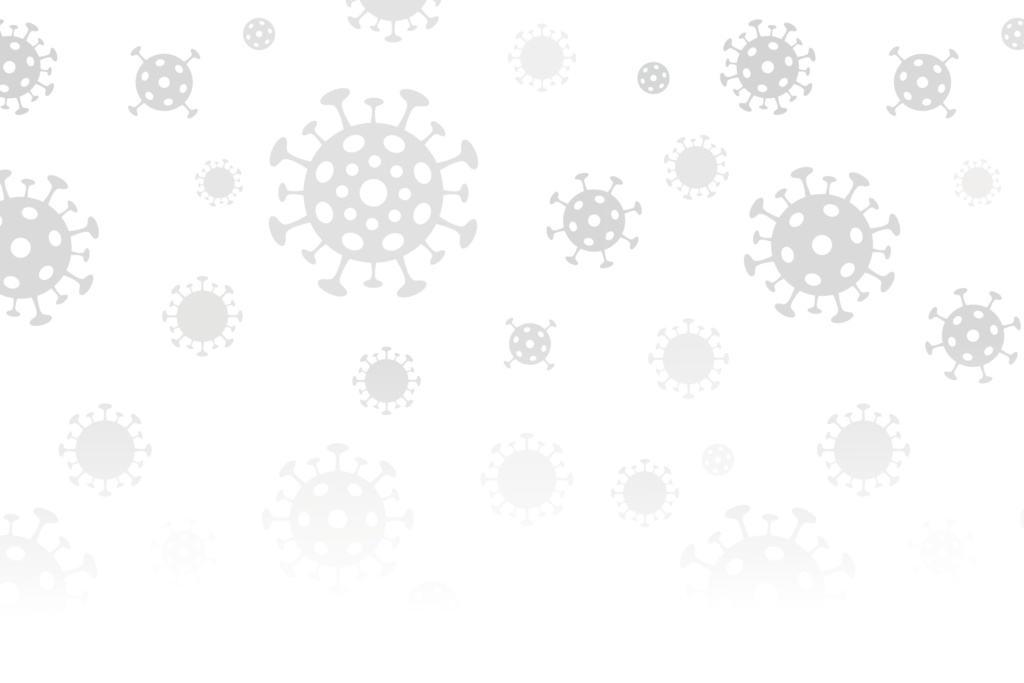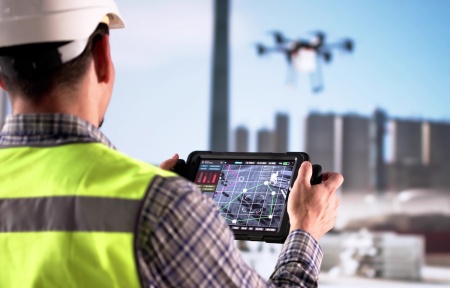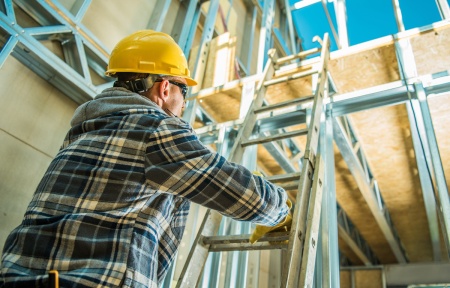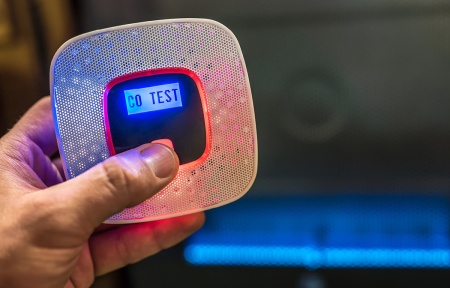COVID-19 has impacted all of our businesses in some way, shape or form. What lasting impacts will this experience have on our industry and the regulatory agencies that oversee it?
By Steve Guglielmo, Tom Badstubner, Marilyn Dempsey, Michael Dodd and Rick Schweitzer
As we enter the Fall, it seems like we have lived with COVID-19 for several decades, not six months. We have moved on from this being a novel threat to dealing with the reality of this being a part of our day-to-day lives. As we experience this “New Normal” and continue to work toward getting back to where we were before March, GAWDA’s Consultants have been with us every step of the way. They have been holding webinars and roundtables with members since the pandemic started. For this issue, Welding & Gases Today had the opportunity to speak with these consultants about trends that have emerged from this period that will be long-lasting. What best practices will continue even after we “return to normal?” What old practices will be phased out?
For this issue, we spoke with GAWDA’s newest consultant, Marilyn Dempsey, who advises members on topics related to DHS, EPA and OSHA, Michael Dodd, GAWDA’s DOT Consultant, Tom Badstubner, GAWDA’s FDA and Medical Gases Consultant, and Rick Schweitzer, GAWDA’s Government Affairs and Human Resources Consultant. The following is a lightly edited transcript of that conversation.
Welding & Gases Today: This year has been anything but business as usual, so companies have had to really adapt to some pretty unexpected situations. What best practices have we seen emerge from this year and what practices do we think are not going to return? Are there outdated practices that we had clung to that you think might go away permanently?
Tom Badstubner: I think we are seeing many examples of new work practices. For example, we are seeing a lot more FDA Medical Gas training happening remotely. We even troubleshoot gas chromatographs remotely now. This makes the service more responsive and less expensive since travel costs are often avoided.
WGT: With the remote training, do you feel that there is any effectiveness loss with it not being in person? Do you find people tuning out more easily? For me, personally, I struggle with anything more than an hour.
Tom: People tune out – even in face-to-face meetings. You absolutely lose effectiveness on video calls. It makes it harder on the presenter (and the viewer) to keep interest. But what you gain is access. A lot more people can attend, even if the effectiveness is a little bit lower. It’s not a perfect solution, but I do think we will see a lot more of it.
Rick Schweitzer: But you’re right, Steve. My clients have realized that an hour or an hour and 15 minutes max is the attention span of people and then everybody starts doing other things at that point. But it also gives you the opportunity to provide written materials. And people do follow up on those, so that is helpful.
Marilyn Dempsey: I think it makes us up our game. When you are in person, you can read people. You can look at them and see when they are zoning out, or if they have a question. Being remote, you can’t read their body language. And so, you have to make the presentation much more appealing.
WGT: So, aside from the remote communication, have you seen any best practices that have come out of this year and the way we have had to do things that you think will be long-term solutions? Or things that we have evolved past?
Marilyn: From the membership standpoint, I’ve certainly seen some things come out. And I think they are going to stick and be with us long-term. One of the main things that we have always had an issue with is housekeeping. You know, when you get busy and you have to get the product out the door and to the customer. But now, there is a new emphasis on cleaning. And I think that is going to be ingrained in our culture now.
I think communication has been increased significantly, between managers and floor personnel and drivers. I also think, with customers, it has opened up a new way of speaking and has increased the ability or sharpened a skillset with our salespeople in giving that added value to the customer. Because now, you’re not just calling about, “This is what our product can do for you.” Now it’s, “This is what our company does, and this is how we’re going to keep our company safe. How can we work together to have a clean, basically no-touch system as much as we can?” That value-add can be really emphasized. And it may take us to a whole new level.
One of the neatest things I have seen is that some of our members are doing remote pickup. Similar to the remote pick-up at a grocery store or at Home Depot. Members are taking technology and saying, “How can we make it so that we can have remote access where the customer can enter a code and get their things?” That, I think, is wonderful. It makes it easier, there is no contact and there’s no time constraint. The downside is that there used to be a coffee klatch first thing in the morning. Customers would come in and chat. That is gone.
WGT: Do you think that, whenever it is that we move past this, that we will start to return to some of those things? As you said, there is a safety aspect but there is also the networking and communication aspect that has, necessarily, gone by the wayside.
Marilyn: I do think that we will get back to that, a bit. Human beings are social creatures. And we need interaction. I think that is one of the hardest things that our society is dealing with right now. I was on a webinar with the head of NIOSH and he said, “Get used to this, because it’s not going away for at least two years.” That’s his prediction. So, we are going to need to develop new skill sets. And it will be really interesting to see how this goes forward and morphs into having the human connection while keeping our distance.
Tom: Just to build on one thing Marilyn is saying, we have a somewhat different expectation from our customers now. In the past, in some cases, we may have been more casual about assuring the empty cylinders we received were clean and appropriate. It seems more important now that we have an understanding with the customer of exactly what they are doing to our cylinders. Is the cylinder properly prepared for refilling? Has the cylinder been properly cleaned by the customer, where needed? We need to know the customers actions because we may need to do some additional cleaning ourselves.
Rick: The one significant change that I have seen is not from business, but from government. I go back to the President’s May 19 Executive Order on regulatory relief to support economic recovery. It’s a significant Executive Order. Most of them are generally ignored, but this one directs all the federal agencies to do a couple of things. One is to look at all their current regulations and see which ones can either be waived or exempted, or even permanently gotten rid of to promote economic recovery. This was in response to the COVID pandemic, but it’s not limited to that. There is also a part of this that talks about enforcement discretion. Agencies should look at enforcement discretion in order to help companies that might have technical violations of the regulations but have been working in reasonably good faith to comply. I have used that argument in a number of scenarios, both for rulemakings and for, most recently, an enforcement action against a company that was shipping hazardous materials. There are some teeth to this now. And the question is, is it going to survive the pandemic? I think that depends, largely, on the election, frankly. If the President is re-elected, then I think this is something that will last at least into the next four-year term. But I think it is driving what is going on in the federal agencies right now. Mike and I deal with DOT, and we have seen the extensions of the CDL and Medical Carts and extending cylinder retests. The agencies are really trying to help companies not be hamstrung by regulatory compliance issues. And I think that comes from the top.
Mike Dodd: From the regulatory side, we talked about this in the last magazine article. Not much has really changed from when we wrote that article to today, in terms of compliance, other than the fact that we were seeing only a couple of remote audits when we wrote the last article. Now, I’m on my sixth or seventh remote audit. I think it is going to become the thing of the future. They did it so that the inspectors wouldn’t have to do in-person and expose the member and themselves. But, I think, what they have found is that they can do a lot more of them with less effort. And saving on their travel expenses and out of office expenses. I think they are really happy with the results, because they’re doing more and more of them.
The other thing is that it used to be that these agencies would come in and spend half a day, a day, sometimes two days, and on the very rare occasion we would have an inspector stay a week, two, or three at a member company. But now, we are noticing that with this remote audit it is taking anywhere from a week to three or four weeks. It only involves a few minutes each day. They will come ask a few questions and say, “Email this stuff to me. Or attach it send it to me.” And then they will digest that and then come back and ask some more questions. I think what is going on from the inspector standpoint is that they may have a whole bunch of them going on at the same time and they are just going from one to the other. Or, I think it has given the inspectors the chance that when they get this information, they can research it, research past interpretations, read the rules, talk to their supervisors, and then come back with a more pointed question. I have noticed that some of the questions are a little bit more detailed than they used to be when they were in person. But, so far, it has been an OK experience for our distributors. They don’t like the time and how drawn out it is, but they sure like the fact that they don’t have somebody sitting across the desk from them and that they have got time to find stuff and put it together to respond. So, I think this is going to be the wave of the future and we are probably going to see a lot more of it.
Tom: The FDA has, on the food side and on the drug side, sent questionnaires out to plants. We have not seen those questionnaires result in the type of audits that Mike is describing. But we have seen them ask very specific questions about our plants. Some of the surveys were very simple and some were clearly pre-audit questionnaires. The FDA and state agencies are beginning some face-to-face audits again at GAWDA members and at the majors.
Marilyn: I talked to a member of Texas OSHA, and she had a couple of comments. Tom brought up the fact that FDA and OSHA collaborated COVID information. She told me that they are collaborating with other agencies for COVID and there is, like Mike said, some discretion that is given to the inspector also to the district manager, to look at the whole picture before passing judgement. They are going to stay with remote inspections, except for fatalities, serious immediate dangers, and serious complaints. She said, “Some complaints, like, ‘We don’t have enough toilet paper,’ will not result in an onsite inspection.” Overall, they are being very judicious in how they send agents out, because of the health risks that are involved.
WGT: It sounds like there is some enforcement going on, beyond COVID. Do you feel like we are back to where we had been pre-COVID as far as enforcement and inspections and things like that? Or are we still shifting? How much of the agencies’ time is being consumed with COVID, versus how much is being consumed with the actual business of the regulatory agency as it was before March?
Rick: I think we are transitioning towards more of an enforcement or pre-COVID environment. I see that from a number of different agencies. But what I would also say is that one of the benefits of this pandemic is that, in a certain weird way, it has made agency personnel more available. You’ve got webinars and video conferencing and such. It’s a lot easier to schedule a video conference with an agency than it is to schedule a face-to-face meeting. Obviously, there is no travel involved. And they are trying to make themselves available. For instance, the head of the Federal Motor Carriers Safety Administration has done any number of industry updates. These are things that they might have done in the past, but not nearly with the same frequency that they do now. And you can call up now and schedule these kinds of things. They are much more available than they used to be.
Tom: We’re seeing the same with the FDA. It used to be a long process to get a meeting with them. And now, we have had several meetings with the food side of the FDA and the device side of the FDA very quickly via teleconference. I also agree with Rick’s comment. During the first part of the pandemic we saw a lot less inspections. Now they are picking up a bit.
Mike: I agree. The first part of COVID, there were no roadsides. Now, I have been answering a lot of roadside inspection questions, in just the last week or so. And I’ve been seeing them on the side of the road. And they are not necessarily just roadside inspections. I made a short trip yesterday, and I have seen more law enforcement stopping people on the side of the road, whereas before you didn’t see that at all. So, I think, in our area, which is a lot more open and not nearly as locked down as a lot of the coastal places are, it looks like things are getting right back to normal. So, I think our roadside inspections are going to get right back to normal.
WGT: We discussed in our last issue that as we began the shutdown, there was going to be a big backlog of inspections. People that were due for an inspection, that they would have to work through that before things got back to normal. Have you seen that backlog clear a bit?
Mike: From a DOT standpoint, I don’t know that they had a schedule. If there is one out there, I don’t know about it. I think things have just started back up. I don’t know if there is an effort to catch back up. If they had people booked in April and May and June, I think they are just taking the schedule and picking it back up and starting again.
Marilyn: I think communication is opening back up. I have had a few inquiries about DHS letters that have been received. Agency communication is slowly starting to get back to normal.
WGT: I don’t even want to entertain the idea, but if there was a second wave and we have to go back to where we were in March, where a good portion of the country is forced to shut down again, are the agencies better prepared having experienced this once than they were the first time?
Rick: Experience is the best teacher. So, I would say the answer is yes. First, everyone knows how to work from home now. Everybody has figured out these half a dozen Zoom and office platforms. We have all done this a million times now. So, from a purely administrative, office standpoint, yes. But the key to that is businesses. Another business shut down would be devastating.
WGT: Are there any new initiatives that you are seeing come out of the agencies, even beyond as the pertain to COVID? Or is it all quiet on the Western front until we get a little bit more guidance?
Rick: I can think of three initiatives that came out of the Federal Motor Carrier Safety Administration just from this year. The first is the Drug and Alcohol Clearinghouse that came out January 6. That fundamentally changed how people handled drug and alcohol testing. The second was making permanent their crash preventability program, so that companies can go online and present evidence that a crash that is held against them in the system was determined to not be their driver’s fault. And the third is the new driver hours of service rules that are supposed to go into effect on September 29. All of these are actually very positive developments for industry. I think that they make things more efficient and hopefully they will make operations safer, too.
Mike: I agree with that. In the past, we have had compliance things come to us that have been a hindrance. They cost us money, time, and effort. These last three that Rick talked about, those are all positives for our membership. It is actually helping them. They might not think that the Clearinghouse is helping them, but trust me, now that it is settling down and people are starting to use it, I think that this is going to be a really nice tool for them. And when the hours of service kick in, that is going to be a very big thing for our membership, because so many people will be able to take advantage of the 150 miles and the 14 hours on duty. That will be a nice thing for our people.
Marilyn: From my standpoint, I think the biggest changes are coming from certain the states. There are several states that requiring pandemic safety plans for any business that wants to reopen. Illinois and New York come to mind. Federally, OSHA, just like the FDA, will be more remote. It is a more efficient use of their inspectors. I have had members call about security issues, as it relates to civil unrest, and DHS was very responsive.
Tom: Mostly, we see the FDA continuing the previous initiatives that they had in place. Some initiatives have been slowed down. For example, the release of the new proposed regulations for medical gases was postponed another year. We have also seen a more proactive position on maintaining the drug supply system and avoiding shortages from the FDA.
WGT: This will be in the Q4 Magazine. So, any last bits of wisdom you want to leave members with for this year?
Mike: I would like to reiterate that I’ve got a real concern that we have been very involved with the pandemic and taking care of business and getting things back to normal. I understand that. But I’ve got a real concern that people might be getting behind on their refresher training. It has just not been the forefront of their mind. And I think, as the audits pick up and they start asking questions, I think our members may be caught short when they find out that they have not done their three refreshers or that they haven’t done their new employee training. I know they are not bringing on a lot of new employees, but they are bringing on some new employees. And they tend to forget about those. And I know that at least one, if not two, of the recent audits that has been the thing that has been caught. They forgot to do the new person. They were busy taking care of business. Which, of course, I understand. But I think our members need to take a step back and look at their training records and look at their spreadsheets and just make sure to get caught back up again.
Rick: Looking back on last year, I think we can pat ourselves on the back to a certain extent that we have all survived this. We have all had to learn new skills. And, I think it’s emphasized the need for the GAWDA membership to rely on the association and its communications and its consultants. I think it has emphasized the benefit of the association to the distributors and to the manufacturers in this industry. I think we have all helped each other get through this. And here’s hoping 2021 will be a bright and safe environment for us all.
Tom: I really think that GAWDA and GAWDA members have been very responsive. I agree with Rick. The way that GAWDA and the members have responded during the rush of the pandemic, in the communications and initiatives during this really challenging time I think has been outstanding.
For members, my advice would be to look carefully at things that may have slipped during the rush of the pandemic. I’m thinking, particularly, of tamper-proof connections on liquid containers. That is an issue that has, in the past, caused fatalities among our customers. It would be a good time to look at our medical liquid containers and make sure that all of the connections are still tamper-proof.
Marilyn: I have to agree, GAWDA has been very responsive. We had considerations for a business contingency program weeks before we heard anything from the government. The industry has really been quite responsive. And the members have been really resilient. It’s, “You’re not going to get us down. We’re going to keep going forward.” Mike and Tom brought up we have to go back to the basics. We know what this “new normal” is and it’s going to continue to morph, but get back to the basics. Make sure that we have our basics covered. For training, for equipment, for our safety devices. And we, as consultants, will be supporting getting back to the basics.







